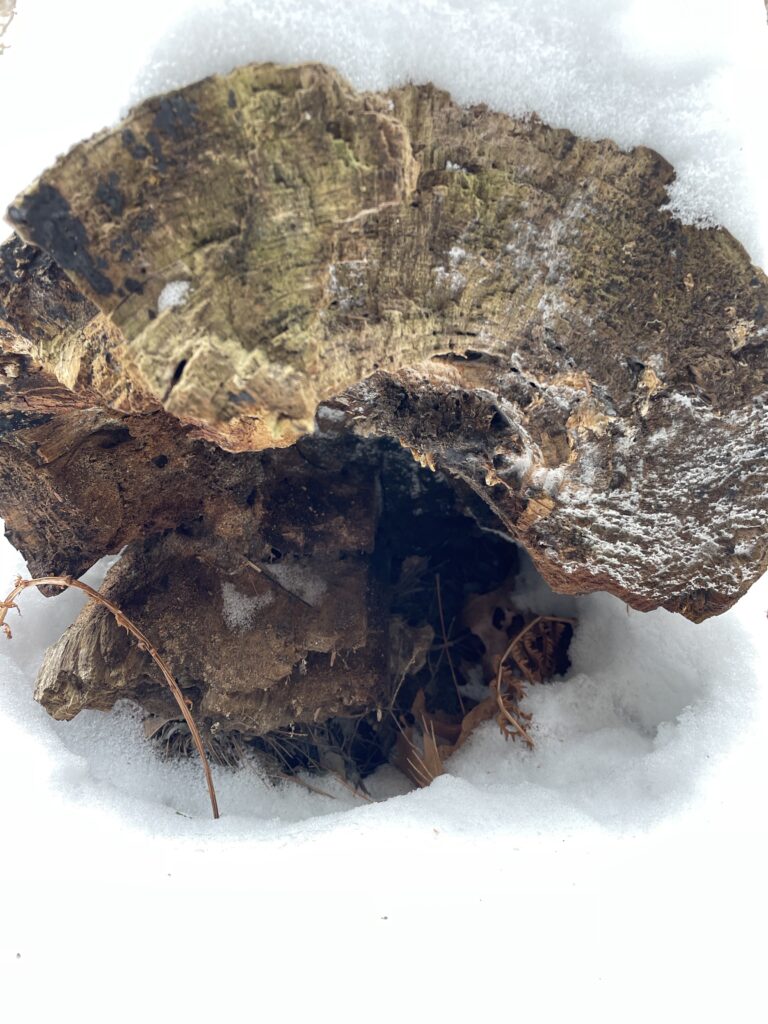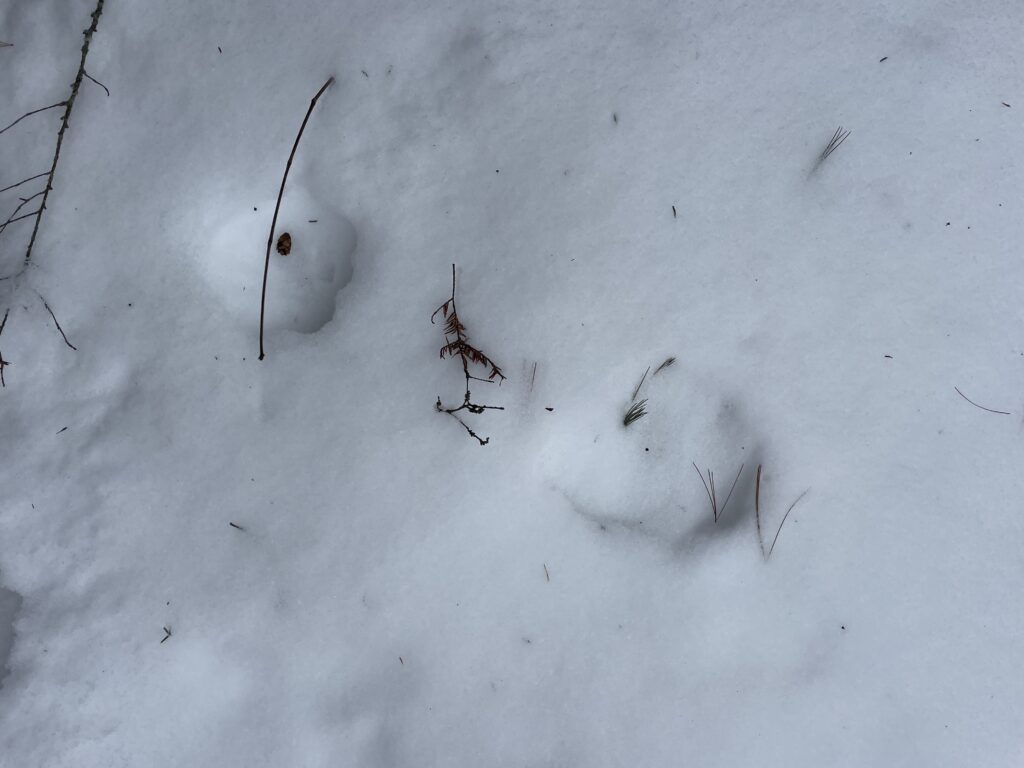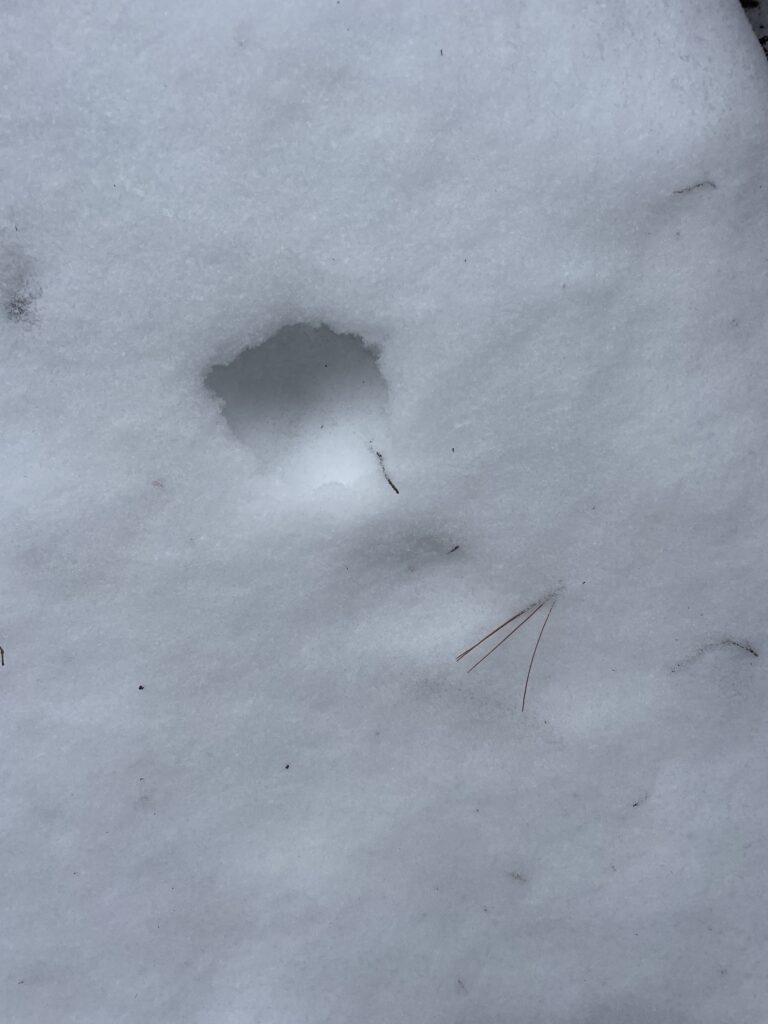Today’s visit to my phenology site was by far the most painful. It was 3 degrees when I traveled into Centennial for the first time this month and it felt absolutely freezing. Tracking was significantly more difficult than I expected it to be! I knew that I was in for a challenge, but trying to discern what might be an animal track versus an indent resulting from animals tunneling within the subnivean zone versus what was simply the result of snow falling on uneven organic debris. The only tracks I felt confident in identifying were shoe prints. This was interesting to see because I now know that others have been exploring the same area. I found some singular markings that looked like they could have been tracks, but never any in any sort of arrangement that would indicate walking, trotting, bounding, or loping. I found what appeared to potentially be ermine tracks, and some holes that I thought could have been created by voles. There were also single tracks that looked sort of similar to fisher tracks, but no markings were very clear or distinct. I noticed urine stains (but no strong smell, which would indicate that a Red Fox might have left it) and some scat on the way to and from my phenology spot, but unfortunately, no such things were found close to my actual location. Centennial Brook was invisible, covered by several inches of snow and shoe prints in some places. It may have been frozen over, but I didn’t want to risk checking. Today, in the face of such extreme cold, I was much more aware of spots that would make perfect nesting spots for animals who are hibernating or living in a dormant state. I’m sure that the fallen logs insulated by the decently thick layer of snow are currently home to many different insects and small mammals and that the gaps between these logs and the ground are where other animals, maybe fishers, would seek shelter. The wildflowers did stand out just as Mary Holland claimed they would in the January chapter of Naturally Curious. Daisies and goldenrods definitely have a distinct beauty to them at this time of year. There was an egg case attached to one of the goldenrod stems that was left by a Black-and-Yellow Argiope spider for egg protection. The sick branches of one of the large Hemlocks on the backside of my phenology spot stood out greatly against the winter landscape. The Hemlock is beautiful and I’ve been keeping an eye on these branches, hoping that the disease doesn’t spread further or cause the tree any more harm. Also, the Red and Sugar Maples as well as all woody plants in the underbrush on the brook point of my phenology spot dropped all their leaves and were completely barren. The burdocks and the Red Osier Dogwood at the tip of the point were devoid of any liveliness. It was really nice to get back into Centennial and check in, and I definitely am looking forward to warmer visits in the future. :)









